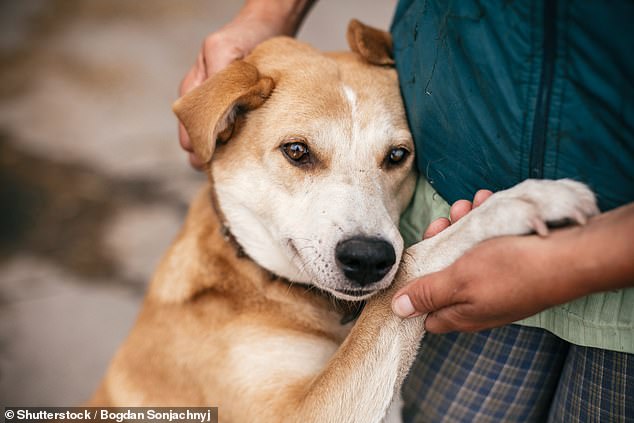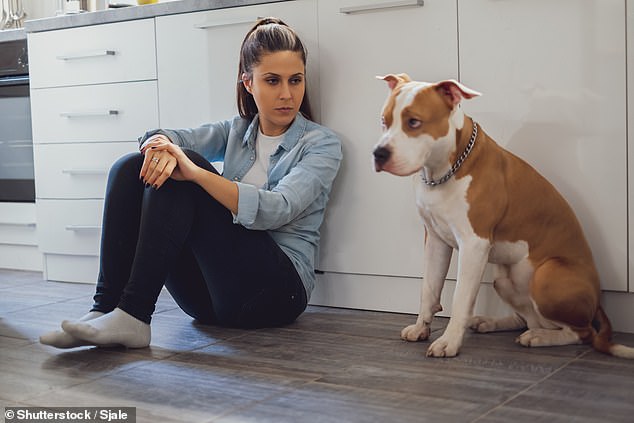- The researchers identified nine emotions in the wolves with 71 percent accuracy.
- But accuracy dropped to just 65 percent for domestic dogs of all breeds.
- Selective breeding has limited dogs’ ability to produce varied facial expressions
Most dog owners will insist that they can tell what their dog is thinking just by their face.
But man’s best friend used to be even more expressive, according to a study.
Researchers have found that the domestication process has resulted in the loss of some communication skills in today’s dogs compared to their wolf ancestors.
The team, from Durham University, used a dog facial action coding system to analyze video recordings of captive wolves and domestic dogs.
This occurred both during spontaneous social interactions and during reactions to external stimuli, for example, a squeaky toy.
Puppy eyes: Man’s best friend used to be more expressive, according to a new study from Durham University

The researchers identified nine different emotional states that could be predicted based on the wolves’ facial movements with 71 percent accuracy. However, accuracy dropped to just 65 percent for domestic dogs of different breeds.
The researchers identified nine different emotional states – including anger, anxiety, curiosity, fear, friendship, happiness, interest, joy and surprise – that could be predicted based on the wolves’ facial movements with 71 percent accuracy.
However, accuracy dropped to just 65 percent for domestic dogs of different breeds.
Confusion was especially high between positive states such as friendship and negative states such as fear.
The researchers suggest that different facial structures resulting from selective breeding, such as shorter snouts, drooping ears, pendulous lips and excessive wrinkles, have limited the ability of dogs to produce the same range of facial expressions as their wolf ancestors.
In fact, dogs that had short, wide skulls, droopy or semi-droopy ears, or pendulous lips were associated with nearly 80 percent of cases in which a dog’s facial expression did not match its perceived emotional state.
According to the authors, this confusion between positive and negative states could be detrimental to dog-human interactions and even pose safety risks if humans misinterpret dogs’ fearful or aggressive behavior as friendly.
They suggest that domestic dogs may compensate for limited facial expressions by vocalizing more than wolves during social interactions.

The researchers suggest that different facial structures resulting from selective breeding, such as shorter snouts, drooping ears, pendulous lips and excessive wrinkles, have limited the ability of dogs to produce the same range of facial expressions as their wolf ancestors.
Lead author Elana Hobkirk, from the university’s Department of Biosciences, said: “This study demonstrates how important it is to be able to observe fine details in behaviour, and how such observations have allowed us to see how complex and sensitive wolves are from the very beginning. communicative point of view”. How domestication may be affecting our social bonds with our companion dogs.
Co-author Dr Sean Twiss said: “Our research team focuses on individual differences in animal behaviour, and Elana’s work adds an interesting new dimension to this, revealing how individuals differ in their abilities to convey their emotional states, and what that might imply for successful communication – or not – within social groups, including humans and their dogs.’
The findings were published in the journal Scientific Reports.


